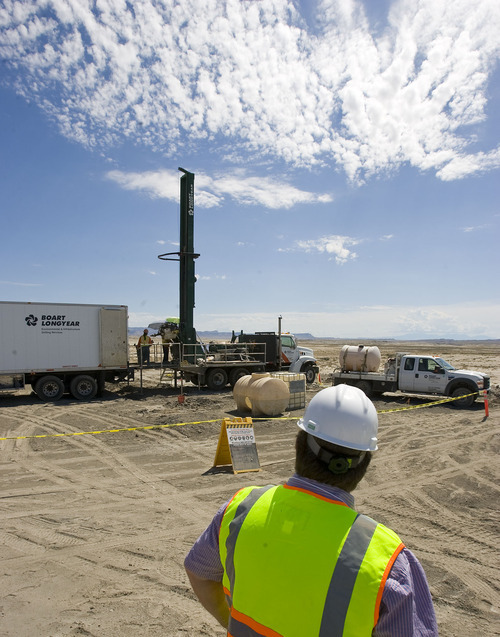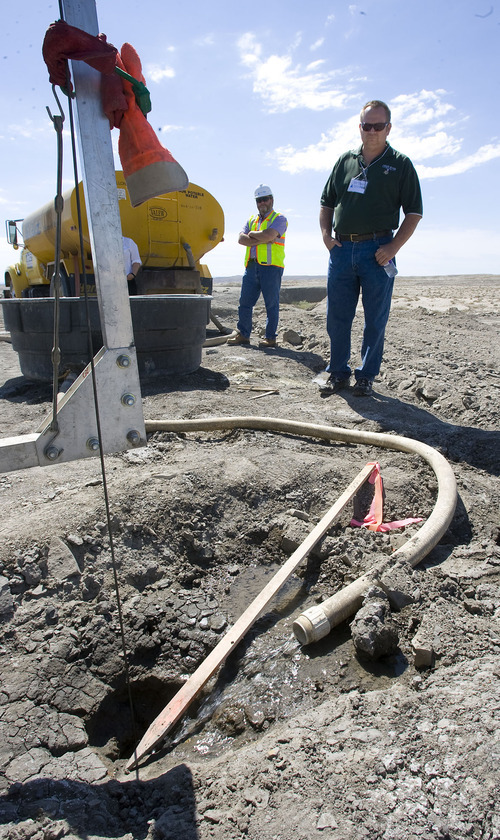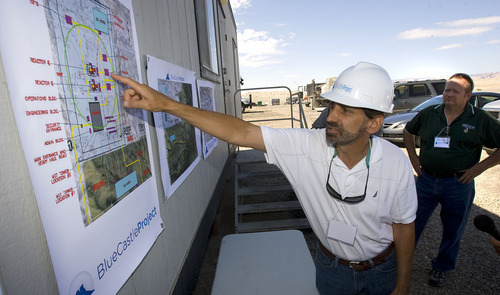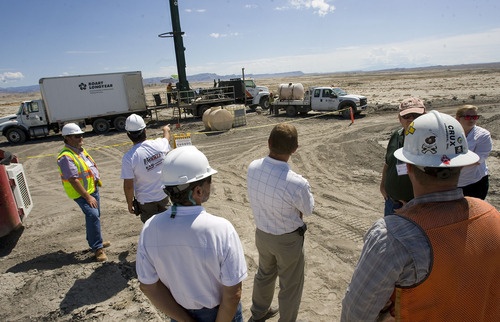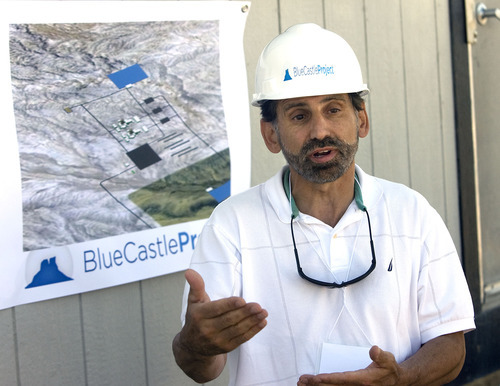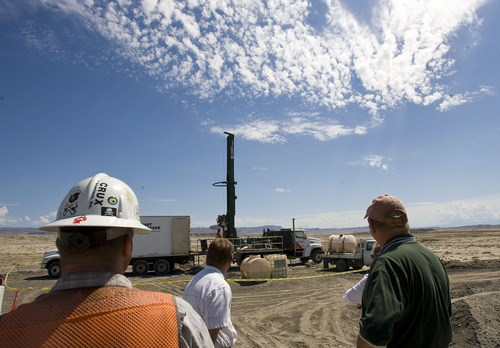This is an archived article that was published on sltrib.com in 2011, and information in the article may be outdated. It is provided only for personal research purposes and may not be reprinted.
Green River • Developers hoping to build Utah's first nuclear power plant have finished an early stage of site testing and say they haven't found evidence of any problems that would scuttle their plans.
Blue Castle Holdings is filling drill holes left from a summer of geologic core sampling and continues to gather meteorological and groundwater information at its desert location four miles northwest of Green River. The information is for an early site permit application that the company plans to make to the U.S. Nuclear Regulatory Commission in 2013.
The good news for investors, Blue Castle Project Chief Operations Officer Thomas Retson said Friday, is that all 4,900 feet of rock cores drilled from 12 holes looks the same. It's all gray Mancos shale, which looks and feels like a chalkboard when polished.
That homogeneity likely means the plant's underpinnings would be relatively stable in an earthquake, he said, and would simplify designing the facility's foundation.
"We're not finding anything that tells us we didn't select a good site," Retson said.
Legally, it would be up to the NRC to determine whether the core samples indicate a good location, but "as far as continuing to invest, we're getting confirmative information that our initial decisions and selections were correct."
The site is in a planned industrial park Emery County has leased from the Utah School and Institutional Trust Lands Administration, a slab of largely unvegetated light-gray desert backed against the Book Cliffs. It's visible from the San Rafael Reef to the west, but not from the Green River, where the company hopes to obtain up to 53,600 acre-feet of cooling water a year for piping to the twin reactors.
Federal permitting is expected to take five years. If the NRC approves and Utah grants the water rights, construction would peak at 4,000 workers and the plant would employ up to 1,000 long term, doubling Green River's current population of 952 residents without even accounting for workers' families.
It's a prospect that Mayor Pat Brady likes, because it would expose some of the highway town's isolated youngsters to new ideas, not to mention options for stemming outward migration.
"These kids would see other versions and see what the possibilities of life are," said Brady, who is also a schoolteacher.
Green River already has excess sewer and other growth capacity from its more bustling days as a missile launch site, he said. Officials also believe property taxes on the plant would essentially double school revenues.
Environmentalists are troubled by the site, and a coalition of groups has written the state engineer asking to block the water permit.
Matt Pacenza, policy director for the nuclear watchdog group HEAL Utah, said the water needs should disturb farmers, including those producing Green River's famous melons.
"Does it make any sense," he asked, "to site such a water-intensive plant in the second-driest state in the nation and with a growing population?"
Pacenza also noted the proposed plant's proximity to a major international tourist trade at Moab and Arches and Canyonlands national parks. Those areas would suffer the consequences in a nuclear accident.
"This is the gateway to one of the most extraordinary parts of America," Pacenza said.
Most damning, though, would be the economics, he said. HEAL Utah sees no evidence that nuclear energy could be cost effective compared with new gas-fired plants.
Emery County Economic Development Director Mike McCandless believes the cost-benefit analysis would pencil out in Green River's favor, partly because power-production costs after construction are low compared with plants requiring constant supplies of fossil fuels.
What's more, he said, nuclear power is more constant than solar and wind, which need backups for when they are unavailable.
The county hopes to attract gas-fired plants to the same industrial park, he said, piggybacking on the roads, water, transmission and other upgrades that Blue Castle makes.
Nuclear-power companies have been poking around Green River since the 1960s because of its combination — rare in the inland West — of highway and rail access, regional transmission corridors and a river.
"This keeps hitting the map for reasons," McCandless said, and he believes eventually a plant will open.
A uranium milling plant that could accompany the reactors would have to conduct its own testing for permits.



